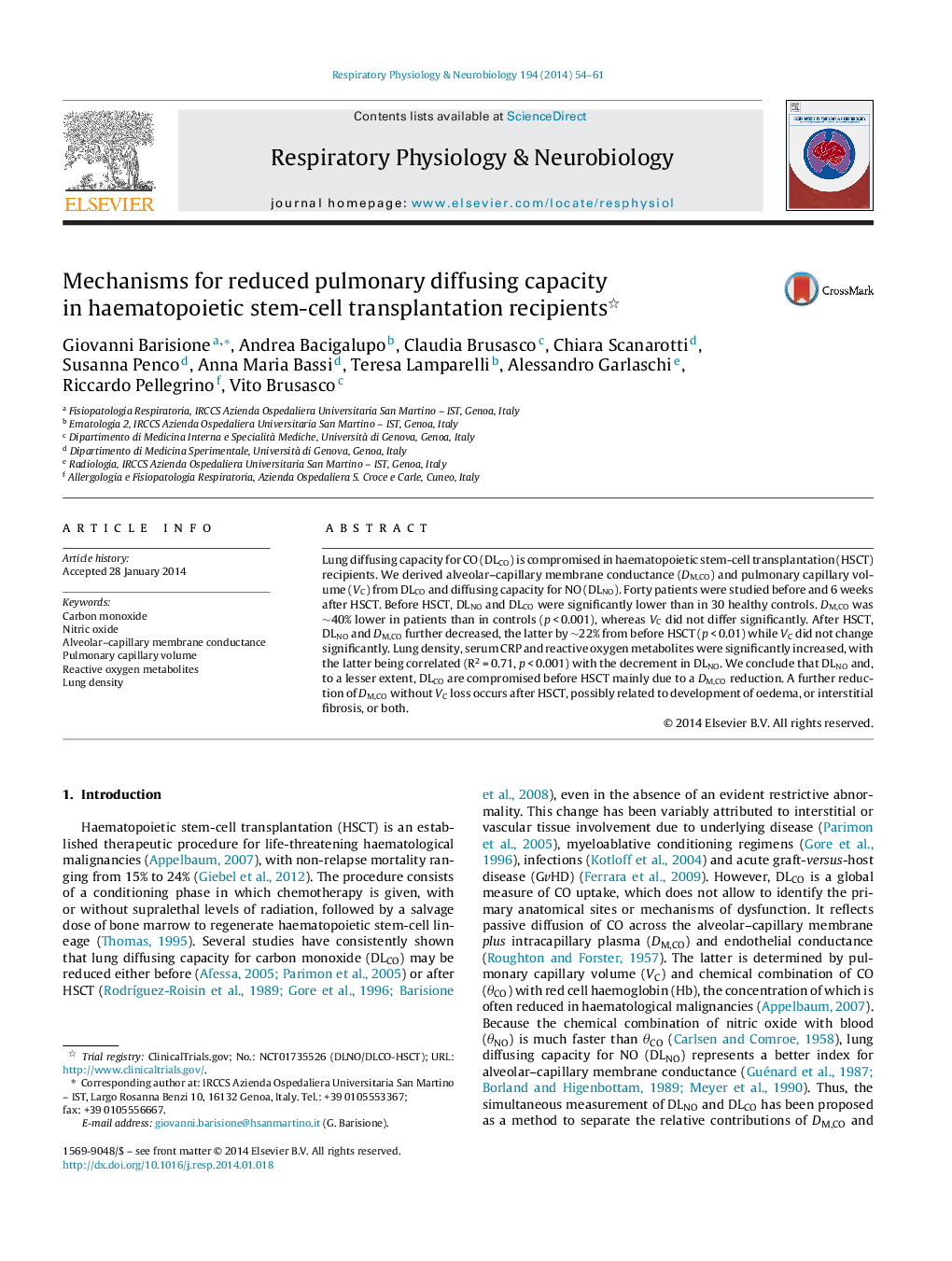| Article ID | Journal | Published Year | Pages | File Type |
|---|---|---|---|---|
| 2847089 | Respiratory Physiology & Neurobiology | 2014 | 8 Pages |
•Patients undergoing haematopoietic stem-cell transplantation (HSCT) were studied.•Alveolar–capillary membrane diffusing capacity (DM,CO) and pulmonary capillary volume (VC) were calculated.•Before HSCT, DM,CO was ∼40% less than in healthy controls while VC was not different.•After HSCT, DM,CO further decreased by ∼22% while VC did not change.•Lung density, serum reactive oxygen metabolites and C-reactive protein increased after HSCT.
Lung diffusing capacity for CO (DLCO) is compromised in haematopoietic stem-cell transplantation (HSCT) recipients. We derived alveolar–capillary membrane conductance (DM,CO) and pulmonary capillary volume (VC) from DLCO and diffusing capacity for NO (DLNO). Forty patients were studied before and 6 weeks after HSCT. Before HSCT, DLNO and DLCO were significantly lower than in 30 healthy controls. DM,CO was ∼40% lower in patients than in controls (p < 0.001), whereas VC did not differ significantly. After HSCT, DLNO and DM,CO further decreased, the latter by ∼22% from before HSCT (p < 0.01) while VC did not change significantly. Lung density, serum CRP and reactive oxygen metabolites were significantly increased, with the latter being correlated (R2 = 0.71, p < 0.001) with the decrement in DLNO. We conclude that DLNO and, to a lesser extent, DLCO are compromised before HSCT mainly due to a DM,CO reduction. A further reduction of DM,CO without VC loss occurs after HSCT, possibly related to development of oedema, or interstitial fibrosis, or both.
Graphical abstractAlveolar–capillary membrane conductance (DM,CO) and pulmonary capillary volume (VC) calculated assuming either infinite (∞) or finite (7.7) value for NO/CO blood conductance ratio in control subjects (open bars) and patients (black bars) two weeks before haematopoietic stem-cell transplantation. Data are mean ± standard deviation; *p < 0.001 vs. control subjects.Figure optionsDownload full-size imageDownload as PowerPoint slide
